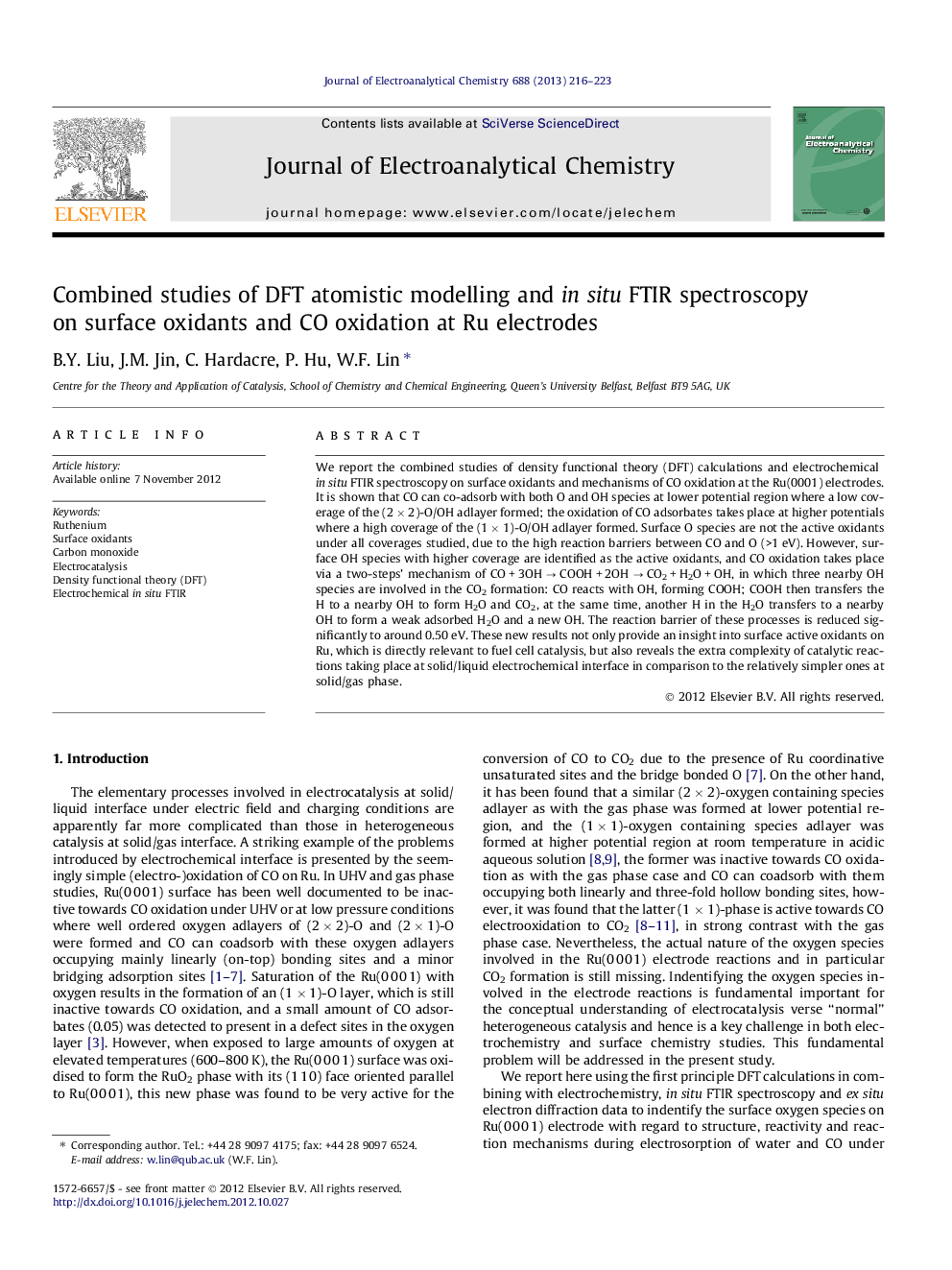| Article ID | Journal | Published Year | Pages | File Type |
|---|---|---|---|---|
| 219220 | Journal of Electroanalytical Chemistry | 2013 | 8 Pages |
We report the combined studies of density functional theory (DFT) calculations and electrochemical in situ FTIR spectroscopy on surface oxidants and mechanisms of CO oxidation at the Ru(0001) electrodes. It is shown that CO can co-adsorb with both O and OH species at lower potential region where a low coverage of the (2 × 2)-O/OH adlayer formed; the oxidation of CO adsorbates takes place at higher potentials where a high coverage of the (1 × 1)-O/OH adlayer formed. Surface O species are not the active oxidants under all coverages studied, due to the high reaction barriers between CO and O (>1 eV). However, surface OH species with higher coverage are identified as the active oxidants, and CO oxidation takes place via a two-steps’ mechanism of CO + 3OH → COOH + 2OH → CO2 + H2O + OH, in which three nearby OH species are involved in the CO2 formation: CO reacts with OH, forming COOH; COOH then transfers the H to a nearby OH to form H2O and CO2, at the same time, another H in the H2O transfers to a nearby OH to form a weak adsorbed H2O and a new OH. The reaction barrier of these processes is reduced significantly to around 0.50 eV. These new results not only provide an insight into surface active oxidants on Ru, which is directly relevant to fuel cell catalysis, but also reveals the extra complexity of catalytic reactions taking place at solid/liquid electrochemical interface in comparison to the relatively simpler ones at solid/gas phase.
Graphical abstractFigure optionsDownload full-size imageDownload as PowerPoint slideHighlights► Combined studies of DFT and in situ FTIR on surface oxidants and CO oxidation at Ru. ► Surface O is not the active oxidants. ► Surface OH with high coverage is identified as the active oxidants. ► CO oxidation takes place via COOH in a two-step’s mechanism. ► Three OH species may be involved in the CO2 formation.
